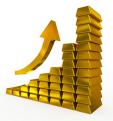Chris Marcus
Chris Marcus Articles
In a year that began with expectations of rate cuts that haven't yet come, it's increasingly appearing that the wait may be coming to an end.
Not only are we seeing a shift in the way gold is being used as a store of value, but we continue to see a change on how the gold is being stored.
Even with gold setting new record highs earlier this year, and silver finally breaking the $30 level, we still have yet to see US retail participate in the rally in any significant way.
Welcome back to Wall Street Silver. Joining us today is Chris Vermillion, Chief Market strategist at TechnicalTraders.com.
Most gold and silver investors are well aware by now that the central banks have set records for the amount of gold they've purchased in the last 2 years.
Over the past few months reports have emerged that the BRICS are now more actively moving along plans for a gold-backed settlement currency called 'The Unit.'
While China and the global central banks continue to accumulate gold, the US and the western countries have continued to accumulate more debt.
While gold and silver prices have rallied over the past 3 months there's been a lot of coverage about how much gold China and the central banks have been buying.
During a time when the Fed has aggressively hiked interest rates and left them 'higher for longer' well past what most investors were expecting, we've still seen one of the more impressive gold and silver rallies of the past 2 decades.
The central banks have been on a gold buying spree ever since Russia was sanctioned by the US in early 2022. And they just set a new first quarter record for the amount of gold purchased.










